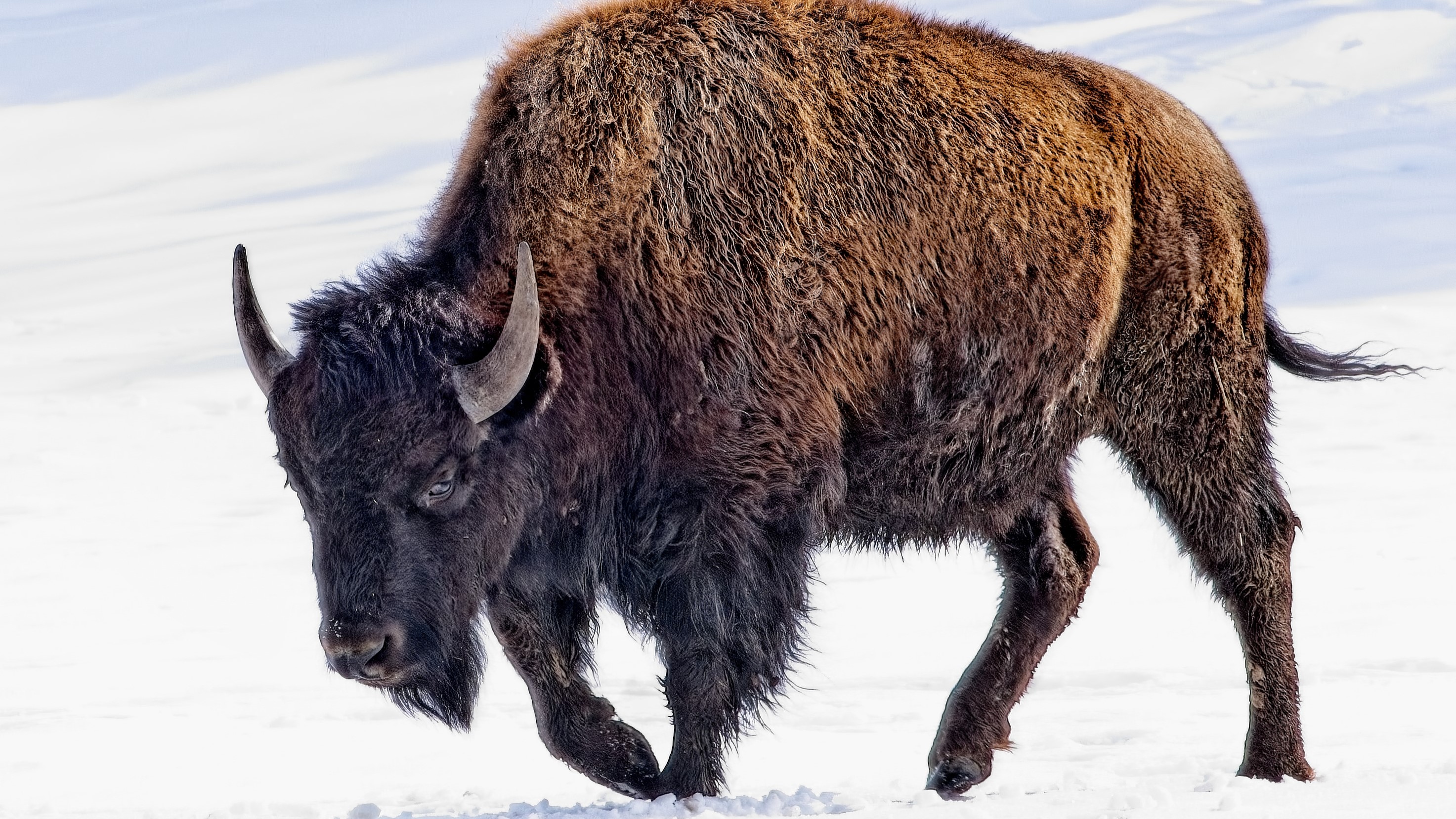
Things get quiet at Yellowstone during the winter. Visitor numbers plummet between November and April, and most roads closed to everything except snowmobiles and snow coaches. The park's bears enter torpor to get through the cold months, but what do the thousands of bison get up to during the cold months, then they're not being harassed by tourists for photos, or petted on the head?
Judging by a video posted on social media this week, the giant animals are practicing their ice skating, with limited success. The clip, which you can see below, shows one animal trotting across an icy creek, losing traction and falling on its butt – twice.
During winter, bison head down to the bottom of Yellowstone Valley, where temperatures aren't quite so extreme. As Smithsonian Magazine explains, they can often be seen wandering the nearly deserted roads in search of food.
Weather in the bottom of the valley is still bitterly cold, but bison have many adaptations that help them survive. Their skin thickens, and they develop extra thick, woolly coats that trap air (much like your down jacket), providing excellent insulation.
"It is said that a bison's winter coat is so thick and provides insulation so effective that when snow accumulates on its coat, it will not melt from the heat of the bison's skin," says the National Park Service (NPS).
The animals' huge heads and shoulder muscles allow them to forage through several feet of snow, and their metabolic systems slow so they can survive on fewer calories when grazing opportunities are limited.
"Forage is retained longer in their gut – due to the increase of indigestible plant material found in the winter – which allows them to eat less but still receive the nutrition they require, " explains the NPS. "Without these adaptations, surviving the freezing temperatures and blizzard storms would not be possible."
For a closer look at these amazing animals getting through the winter, the short film short film “-37°F in Yellowstone National Park by photographer Drew Simms offers an unusually intimate insight. Simms captured his footage during a week-long camping trip at the park last winter.
"I spent time photographing and filming some of my all time favorite wildlife experiences," Simms wrote, "including frozen bison, multiple coyotes, mountain goats, big horn sheep, and many of the geysers around the park. Hands down one of my most memorable winter camping trips of my life."







